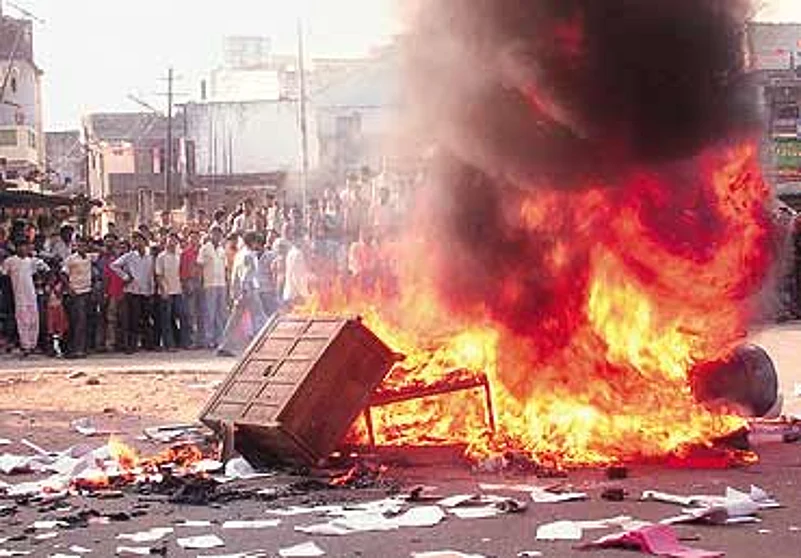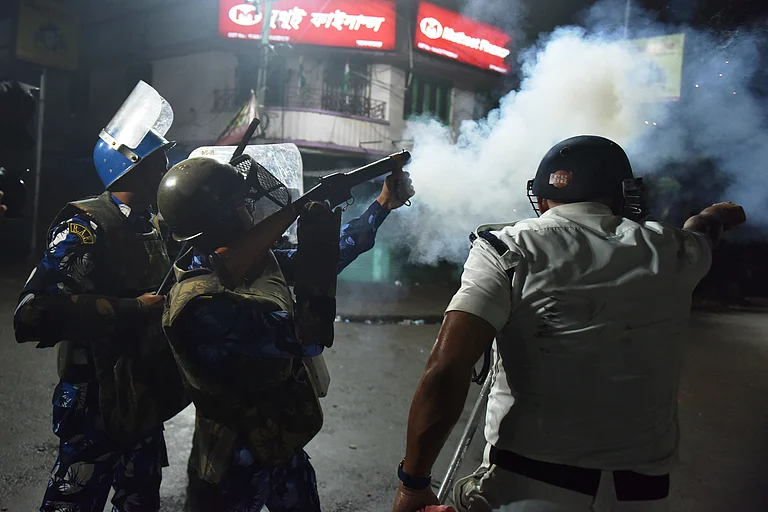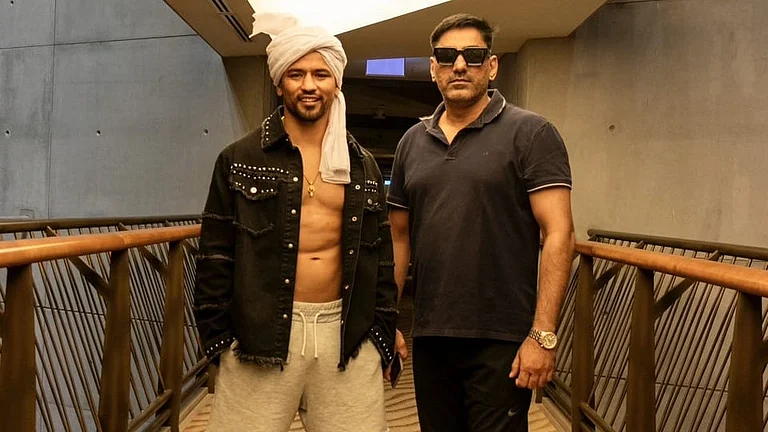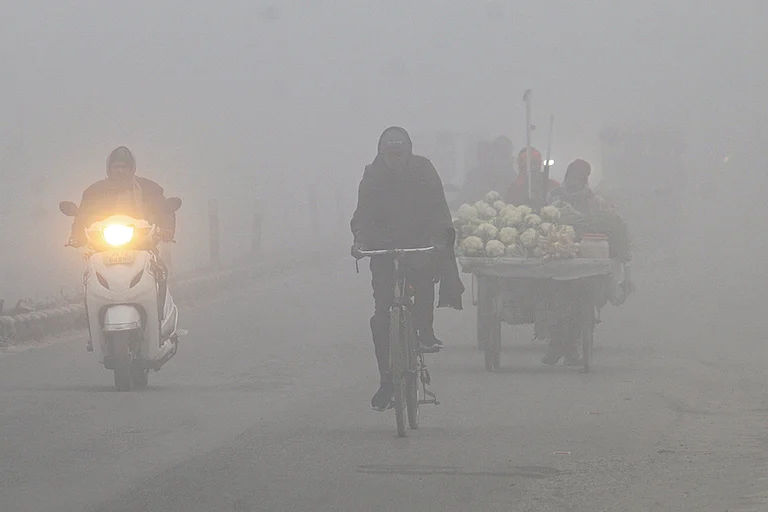Worsening by Leaps
Shortfall in MW
2004: 2000 MW
2005: 3800 MW
2006: 4200 MW
2007: 5500 MW
***
The Maharashtra State Electricity Board (MSEB) office at Thane, a Mumbai suburb, had surprise Valentine Day visitors. In an eye-catching protest against the four-hour-long power cut that the suburb has had to put up with every day since early February, senior citizens marched up to the decrepit building with roses, cakes, heart-shaped balloons, and a kerosene wick lamp. Not that Thane is some enclave for the superannuated. Lakhs of professionals and other jobholders eke out a life in such extended suburbs, managing frenetic schedules in between frequent power cuts.
Small wonder, then, that across Maharashtra, protests against power cuts assumed alarming proportions this week. Monday saw demonstrations and violent protests in as many as 29 cities. Students of Class X lit candles and continued studying outside MSEB offices in some towns. Industrial and domestic consumers in Nashik were provoked enough to stage a rasta roko just off the Mumbai-Agra highway. A young man in Akola, apparently as fed up with officials' attitude as with the customary 12- to 14-hour periods of load-shedding, attempted self-immolation outside the MSEB office. All urban areas of the state except Mumbai go without power four to six hours daily. Semi-urban areas put up with almost eight hours of load-shedding, while rural areas suffer for 14 to 16 hours daily.
Earlier, power supply to industrial zones was shut off once a week. This week, the state government enforced a mandatory two-day shut-down. Industry, especially the small-scale sector, is crying foul at the loss that some estimate at nearly Rs 5,000 crore this season. India Inc is wondering if new projects should be committed to Maharashtra at all, never mind that many big corporates are headquartered in Mumbai. The present shortfall between demand and supply stands at a whopping 5,200 to 5,500 MW at peak load every day.
The protests finally jolted a slumbering state government into action. Chief minister Vilasrao Deshmukh, who is fast acquiring a reputation for gross mismanagement of most issues—from farmers' suicides and rising state debt to Mumbai's makeover and local election losses—convened an emergency meeting with energy minister Dilip Walse-Patil on February 13. The government then requested industry to use its captive power generation plants and not draw power from the state grid. It also decided to float tenders to purchase up to 400 MW surplus power from these captive units. It is buying power from neighbouring states like Andhra Pradesh at rates as high as Rs 7 to 9 per unit, and has resolved to operationalise at least Phase I of Dabhol plant to add 740 MW to the existing grid.
Even the Maharashtra State Electricity Regulatory Commission (MERC) has been critical of the government's lackadaisical attitude to the worsening power situation. Clearly, a crisis of such proportions did not develop overnight. For a state that was happily power-surplus till the late '90s and sold power to deficit states now finds itself out with the begging bowl. "It takes some talent to bring a state to such a disaster," says Gopinath Munde, BJP general secretary and energy minister in the erstwhile Shiv Sena-BJP regime.
Official data shows that successive governments added barely 1,222 MW to the installed capacity in the first five years of economic reforms starting in 1991. Back then too, it was a marginal 11 per cent increase in capacity, but the impact of reforms hadn't set in yet. Also, the 2,100 MW Enron-Dabhol project, India's first private power purchase agreement, ran into countless controversies and complications. Phase I of the plant (740 MW), which should have underwritten Maharashtra's energy needs, did not start till 2004-end. At the last reckoning, the Dabhol unit was feeding barely 350 MW a day to the state grid.

By 1995, when the Sena-BJP alliance made the costly Enron electricity a poll issue and wrested power from the Congress, it was clear that the Dabhol plant would not augment capacity to the extent envisaged. Even if it did, the rates would be unaffordable for MSEB. But efforts to set up other power plants or allow private players to set up theirs were tardy. The maximum demand (restricted after load-shedding) galloped by almost 3,000 MW for five years from 1999-2000, while the installed capacity was more or less constant at around 12,000 MW. Energy experts say the state should have ideally added 300-350 MW in each of those years, but had banked almost entirely on Dabhol.
The small additions to the state's installed capacity was indeed marginal compared to the demand—just around nine per cent in five years. Close to three lakh new domestic and industrial connections were added every year, and serious load-shedding started in 2002-03. Just how severe the shortage would become was beyond imagination. From a shortfall of 2,000 MW three years ago, the state is now grappling with a 5,500 MW deficit. Over-reliance on Enron-Dabhol ruined MSEB's traditional demand-supply equation. Even as officials predicted a seven per cent annual increase in demand, the political will to kickstart new power plants was missing. The Godbole committee, looking into the power situation, recommended demand management and immediate attention to transmission and distribution losses amounting to a monstrous 39 per cent of the total supply.
"I know people are facing hardships and losing money as well but we have no alternative to severe load-shedding," admits energy minister Walse-Patil, "but we are now augmenting capacity." If all the projects on the drawing board go on stream as scheduled, Maharashtra should add around 4,700 MW to its installed capacity sometime in 2010. Dispelling the darkness that engulfs the state will take a special effort.












.jpg?auto=format%2Ccompress&fit=max&format=webp&w=376&dpr=2.0)













